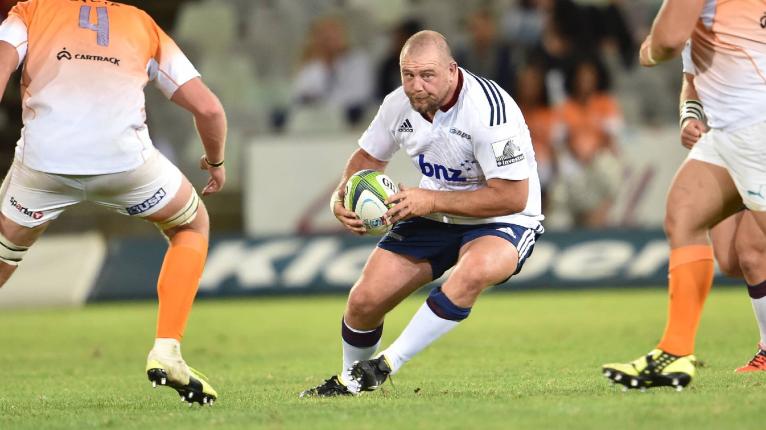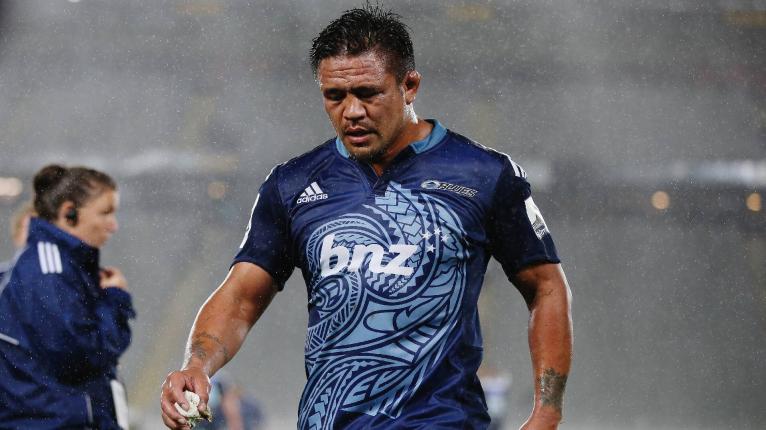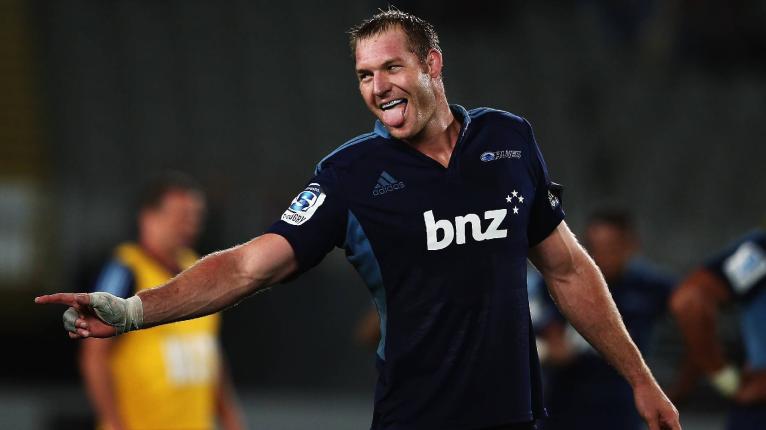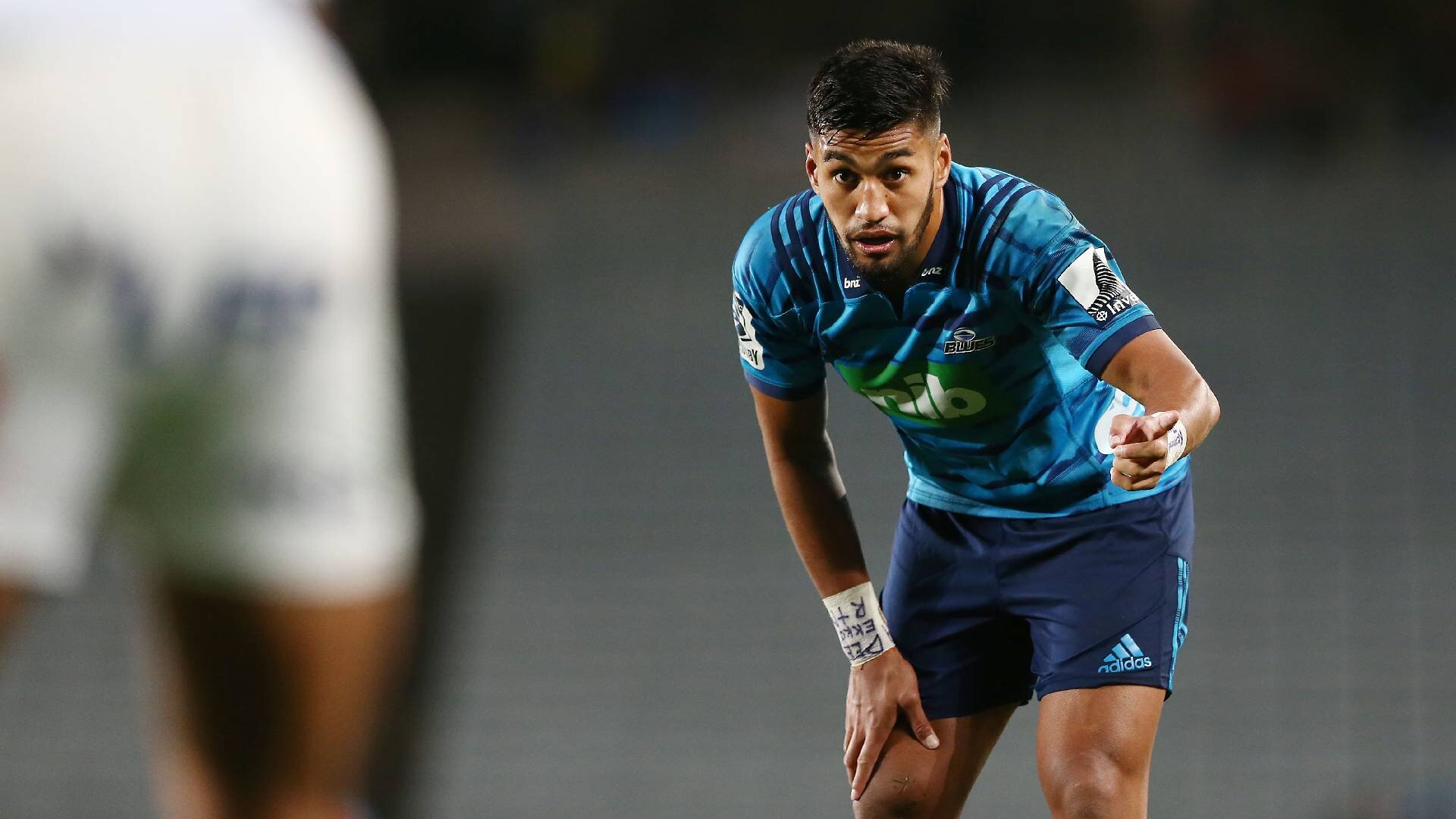Super Rugby Teams of the Decade: The Blues XV that starred over the last 10 years

As we inch closer to the New Year, the time to reflect upon the past decade of rugby is upon us.
Between 2010 and 2019, fans have been treated to a plethora of quality football, and that is no different for Super Rugby, despite the controversies that have been associated with its format and competitiveness in recent years.
Many world-class players have come and gone from the southern hemisphere’s premier club competition throughout the decade, so it only seems right to honour each franchise’s contribution to the tournament over the past 10 years by attempting to name their best XV over that period.
The Season: Hamilton Boys High School – Episode 5
Here, we start with the Blues, who have struggled badly to find a winning formula since their last play-offs appearance under the tutelage of current Bristol boss Pat Lam in 2011.
While their nine-year absence from the knockout stages has been sorely felt, the embattled Auckland franchise have produced a raft of top-quality talent since the dawn of the decade.
Most of the Blues’ star players during that time have gone on to achieve higher honours and become integral figures within the All Blacks set-up, which has subsequently made for a formidable team of the decade for the three-time Super Rugby champions.
Blues Team of the Decade
1 – Tony Woodcock

Born-and-bred in Helensville, Tony Woodcock spent 13 of his 14 years as a Super Rugby player in his home region, with an ill-fated spell at the Highlanders in 2013 denying him the status of a one-club man.
In that timespan, the 38-year-old garnered 137 appearances to become the Blues’ second-most capped player of all-time, and was one of the final few remaining squad members from the franchise’s last title success in 2003.
With two World Cup winner medals also to his name, few come close to emulating the feats that Woodcock achieved in the No. 1 jersey, making him the Blues’ undisputed loosehead prop of the decade.
2 – Keven Mealamu

As the only player to supersede Woodcock for the number of appearances in a Blues jersey, Keven Mealamu made 164 outings for the Auckland side between 2000 and 2015, with a one-off season at the Chiefs in 2002 adding a further 11 caps to his CV.
Such a long tenure at Super Rugby level makes him the fourth-most-capped player in the competition’s history, which is indicative of his immense leadership quality and aggressive, robust style of play.
A long-time partner in crime alongside Woodcock, it’s only fitting that Mealamu is named in the front row beside his old teammate, fighting off the challenge of the Blues’ incumbent rake James Parsons to earn the title of the franchise’s hooker of the decade.
3 – Charlie Faumuina
Since departing New Zealand to bolster his pockets with Toulouse in France, the powerful ball-carrying presence of Charlie Faumuina has been noticeably absent.
Standing at 1.84m and 127kg, the 32-year-old proved to be a colossal figure both with ball in hand and at scrum time for the Blues since his debut in 2009.
That led to an All Blacks call-up three years later, and by the time he left for Europe in 2017, he had racked up 86 appearances for the Blues and 50 tests for New Zealand.
Ofa Tu’ungafasi presents probably the biggest challenge for the tighthead spot in this side, but Faumuina’s legacy with the Blues throughout this decade is insurmountable.
4 – Patrick Tuipulotu
Speaking of colossal figures, Patrick Tuipulotu has been difficult man to miss since he first came onto the scene with the Blues in 2014.
The St Peter’s College product has dimensions of 1.98m and 120kg, and his physical prowess has been a key component in making him a mainstay in the Blues’ set-up.
Bounced back from a difficult 2017 season – where he was stood down from playing against the British and Irish Lions and was accused and then cleared of doping – to come into compelling form both the All Blacks and Blues over the past two seasons.
Set for a big campaign next year as the absence of Brodie Retallick will provide the Blues co-captain with a chance to further solidify his place in the All Blacks.
5 – Ali Williams

Although he only played for the Blues in the first four seasons of this decade, there are few second rowers who possess the accolades worthy of dethroning Ali Williams of a place in this side.
102 of his 117 Super Rugby appearances between 2002 and 2013 came for the Blues, and, like Woodcock and Mealamu, he was part of the title-winning side of 2003.
Standing at 2.02m and 116kg, the ex-Auckland stalwart was a prominent figure at the set piece, while his ability in general play was often superior to that of many other locks around the globe.
Former All Black Anthony Boric stands as Williams’ biggest threat to a place in this side, but 77-test World Cup-winner’s legacy with the Blues is unparalleled.
6 – Jerome Kaino
As a modern-day great of New Zealand rugby, it would be criminal to exclude Jerome Kaino from this team.
The 83-test international was vital in the All Blacks’ tilt for back-to-back World Cup crowns in 2011 and 2015, and his brutal defensive force was similarly felt at Super Rugby level with the Blues.
Kaino left New Zealand to join Faumuina at Toulouse last year, and with 137 appearances for the Blues over 10 seasons between 2006 and 2018, he departed as one of the greatest players to ever pull on the jersey for the Auckland club.
7 – Luke Braid

The evolution of Blake Gibson at the latter end of the decade made the 24-year-old a genuine selection chance for the this team, but a constant string injuries have restricted the All Blacks prospect’s impact in recent years.
Therefore, ex-Blues skipper Luke Braid claims the openside flanker spot after making 69 outings for the franchise between 2011 and 2015.
The 2008 World Rugby Junior Player of the Year wasn’t able to follow in the footsteps of his father Gary and brother Daniel in becoming an All Black, but was certainly a contender for an international call-up through many impressive displays during his time in Auckland.
Headed to France in 2015 to link up with Bordeaux, but is currently a free agent after walking out on the Top 14 club for “personal reasons” in January.
8 – Steven Luatua
While he was predominantly used as a blindside flanker, Steven Luatua’s contribution to the Blues is hard to go past when naming the club’s team of the decade.
Burst into the spotlight in 2012 under the guidance of Sir John Kirwan with some performances which showcased his rangy athleticism, and a test debut for the All Blacks followed a year later.
Won 15 caps internationally between 2013 and 2016, and played 74 times for the Blues before his departure for the Bristol Bears in 2017.
Had he lived up to his highly-touted potential, then it could well have been Akira Ioane slotting in an No. 8 instead of Luatua.
9 – Augustine Pulu
The Blues have been starved of many effective halfbacks over the past 10 years, with the likes of Piri Weepu, Alby Mathewson, Bryn Hall, Sam Nock and Jono Ruru all coming and going without really stamping their authority over the No. 9 jersey.
It’s consequently made for a tough selection call at halfback, but former Blues captain Augustine Pulu gets the nod thanks to both his leadership duties and sharp running game.
However, injuries robbed the two-test All Black and one-time Olympian of performing at his peak for the Blues since transferring from the Chiefs in 2016, and he is now cashing in on his talents with the Hino Red Dolphins in Japan.
10 – Ihaia West
Similarly to halfback, the Blues’ struggles to tie down a world-class first-five have been well-documented, and it’s this lack of quality in the halves that has significantly contributed to their play-offs drought which extends to its ninth year.
However, Ihaia West provided the club with its most electric playmaker in a number of years when he first came on board in 2014.
While he perhaps lacked the composure required to help mould the Blues into title contenders, his fleet-footedness was a valued asset, and his scintillating try to secure a famous win over the British and Irish Lions two years ago will never be forgotten.
Swapped franchises with Otere Black in 2017 to link up with the Hurricanes, and is now in France with La Rochelle.
11 – Rieko Ioane
Although his drastic drop in form this year was disappointing, nobody can argue the impact Rieko Ioane has made for the Blues in his four seasons with the club.
Made his debut as a 19-year-old against the Reds in 2016, and has gone on to score 32 tries in 49 appearances.
The 29-test All Black won World Rugby Breakthrough Player of the Year a year later, and has twice been nominated for the Player of the Year accolade.
A shift to the midfield is imminent next year, but if Ioane can improve his defensive frailties and utilise his devastating pace and power to rediscover his game-breaking mojo, then opposition sides should be worried.
12 – Ma’a Nonu
Across three stints in a journeyman-like decade of rugby, Ma’a Nonu has established himself as one of the Blues’ best midfielders during his time with the franchise in 2012, 2014 and 2019.
A naturally gifted ball-runner who was physical yet elusive with ball in hand, Nonu came to the Blues at a time in his career where his refined technical attributes, such as his distribution and kicking game, shone just as brightly as his blockbusting runs.
Consequently, the 103-test All Black, who made his name with the Hurricanes and spent a year with the Highlanders in 2013, became a genuine candidate for World Cup selection this year after four years out of the international arena, and will continue his career in the United States with the San Diego Legion in the Major League Rugby competition.
Former Blues star George Moala can consider himself unlucky not to have made the cut after 74 appearances for his hometown side.
13 – Rene Ranger
There are very few players who can claim to have had such a ground-breaking impact for a franchise in a single season as what Rene Ranger had while playing for the Blues in 2013.
He had already spent four years at Eden Park and had played in three tests for the All Blacks at that point, but there was almost nobody who could stop Ranger in full flight when he reached the peak of his career six years year ago.
Most who risked their bodies by trying to halt the 33-year-old often ended up embarrassed on their backsides, and while he earned 76 appearances for the Blues across two stints over a seven-year span, his efforts in 2013 alone warrant a place in the Blues’ team of the decade.
Went on to earn further three test caps for New Zealand before jetting off for spells with Montpellier, La Rochelle and the Sunwolves, and will join Nonu in the MLR next year after signing with the Colorado Raptors.
14 – Frank Halai
Like Ranger, Frank Halai’s sensational displays on the wing for the Blues caught the eyes of many in his debut Super Rugby campaign in 2013.
A former All Blacks Sevens representative who stands at 1.95m and 105kg, the 31-year-old was explosive in his three seasons with the Blues, where he scored 14 tries in 39 outings.
The one-test All Black, who scored a try in his solitary international appearance against Japan six years ago, left Auckland to link up with Premiership club Wasps in 2015, and after two years with Top 14 side Pau, Halai will face off against Nonu and Ranger in the MLR next season after signing with the Austin Herd.
15 – Charles Piutau
One of the greatest talents to escape the clutches of New Zealand Rugby, Charles Piutau cemented himself as one of the brightest Blues prospects of the decade when he first came to the fore as a 20-year-old in 2012.
An excitement machine during his time in Auckland, Piutau’s outstanding ability in all aspects of the game made him destined to become a long-term figure with both the Blues and All Blacks, but his premature defection to Europe in 2015 saw him end his career in New Zealand with just 41 appearances in Super Rugby and 17 caps internationally.
Has since spent time with Wasps and Ulster, and continues to make waves at Ashton Gate with the Bristol Bears.
In other news:










































































